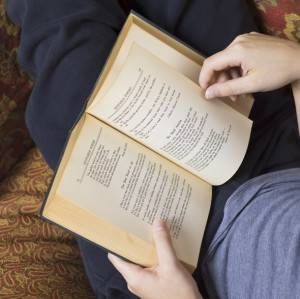
Where To Start With Modernist Poetry
The first lines being written just before the start of World War I, Modernist poetry was a reaction to Romantic and Victorian aesthetics, specifically a drive away from what were viewed as clichés (once new ideas in themselves; alas, the center cannot hold) and excesses of language. As painters were experimenting with form in cubism and novelists experimenting with the surreal and with psychological insights, so too were poets experimenting with new forms and new themes. The result became some of the most popular poetry in the English language and possibly some of your favorite poems (definitely some of mine).
If you want to dive into Modernist poetry, here’s a quick primer of poets to get you going:
Ezra Pound
T.S. Eliot claimed that Ezra Pound was “more responsible for the twentieth-century revolution in poetry than is any other individual.” Pound’s drive to “make it new” embodied the spirit of modernism completely in both succinctness and intention; he was instrumental in advancing the work of little-known poets such as, oh, Yeats and Frost and Williams and Moore and Eliot. (*ironic cough*)
Pound wasn’t that interested in being widely-read, though. His masterwork, The Cantos, can be daunting to some; even Pound said that the work refused to coalesce. George Kearns wrote that “a basic understanding of the poem requires a major investment of time”, because if “one wants to read even a single canto, one must assemble information from a great many sources.” If you’re not up to tackling The Cantos, the Poetry Foundation has a large selection of Pound available online here, including the gem “In a Station of the Metro,” a 14-word poem that showcases the word economy of the Modernist movement.
T.S. Eliot
Pound persuaded Harriet Monroe to publish “The Love Song of J. Alfred Prufrock,” a service for which I am eternally grateful. Eliot wrote in 1945, “A poet must take as his material his own language as it is actually spoken around him.” This was a major theme in Modernism, the move away from flourish and the gravitation toward elevated plain speech.
Like Pound, Eliot used many references to other works, myths, and ideas in his poetry (the study of The Waste Land alone can send one into a footnotes tailspin), but his turns of phrase are so universally felt that the work also stands alone. Though his works are steeped in academia, his themes are human and therefore accessible; he will show us fear in a handful of dust even if we aren’t totally up on our Nietzsche.
Bonus: here is Anthony Hopkins reading “Prufrock” out loud. In case you’re into that sort of thing.
Marianne Moore
Eliot praised Moore for her contribution to the “living language” of poetry. She wielded words with a surgeon’s precision, crafting on-point descriptions and probing the nature of the common vs. the uncommon. When I read her work, I feel the thread radiating from her to poets in the ’60s like Jim Carroll.
Moore made great use of free verse while still maintaining structure with rhyme and space. (I really like her occasional internal rhymes in “No Swan So Fine.” That one is fun to read out loud.) She won a Pulitzer and a National Book Award for her 1951 work Collected Poems, but since we have the gift of time on our side, you can pick up her Complete Poems in one volume.
Federico García Lorca
Lorca grew up in Spain, where he ended up rubbing elbows with artists like Salvador Dalí (though some static between them later drove García Lorca to the US for a visit). Influenced by surrealism and folklore, García Lorca became known for poetry about Gypsies, his socialist leanings, and his sexuality. The latter two may have contributed directly to his death by assassination in 1936, though we don’t know for certain why he was shot to death by National militia.
Thematically, his work delved into highly taboo issues of the time: same-sex relationships, how women are treated in society, and class. He’s quite frank about his sexuality in poems like “Ode to Walt Whitman,” which strikes me now as brave and crazy-dangerous. His style is accessible and straightforward, full of vision-capturing images. A bilingual edition of his collected works is available, which I enjoy–I like teasing out new meaning from the original language, even if I’m not fluent enough to translate it (I’m super not).
If you dig the poets on this list already and want some extra credit reading, try out some of these poets, too (any of whom would have been front and center on this list, were I a queen of infinite space): William Carlos Williams, E.E. Cummings, Rainer Maria Rilke, Wallace Stevens, and Robert Frost.
















